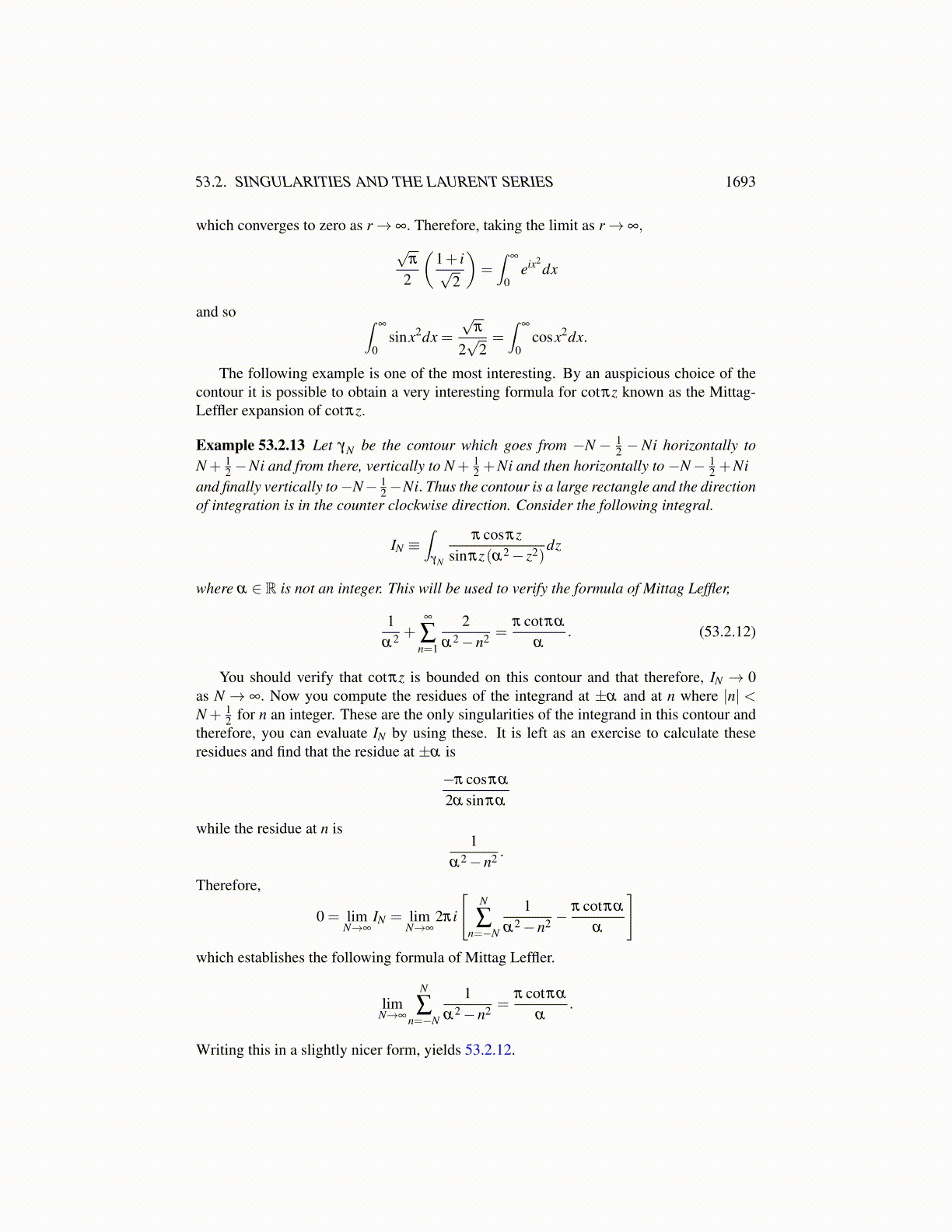
53.2. SINGULARITIES AND THE LAURENT SERIES 1693
Therefore, letting ΣR denote the sum of the residues of f (z)zα−1 which are contained inthe disk of radius R except for the possible residue at 0,
e(R)+(
1− ei2π(α−1))∫ R
0f (x)xα−1dx = 2πiΣR
where e(R)→ 0 as R→ ∞. Now letting R→ ∞,
limR→∞
∫ R
0f (x)xα−1dx =
2πi1− ei2π(α−1) Σ =
πe−πiα
sin(πα)Σ
where Σ denotes the sum of all the residues of f (z)zα−1 except for the residue at 0.The next example is similar to the one on the Mellin transform. In fact it is a Mellin
transform but is worked out independently of the above to emphasize a slightly more infor-mal technique related to the contour.
Example 53.2.11∫
∞
0xp−1
1+x dx, p ∈ (0,1) .
Since the exponent of x in the numerator is larger than −1. The integral does converge.However, the techniques of real analysis don’t tell us what it converges to. The contourto be used is as follows: From (ε,0) to (r,0) along the x axis and then from (r,0) to (r,0)counter clockwise along the circle of radius r, then from (r,0) to (ε,0) along the x axisand from (ε,0) to (ε,0) , clockwise along the circle of radius ε. You should draw a pictureof this contour. The interesting thing about this is that zp−1 cannot be defined all the wayaround 0. Therefore, use a branch of zp−1 corresponding to the branch of the logarithmobtained by deleting the positive x axis. Thus
zp−1 = e(ln|z|+iA(z))(p−1)
where z = |z|eiA(z) and A(z) ∈ (0,2π) . Along the integral which goes in the positive direc-tion on the x axis, let A(z) = 0 while on the one which goes in the negative direction, takeA(z) = 2π. This is the appropriate choice obtained by replacing the line from (ε,0) to (r,0)with two lines having a small gap joined by a circle of radius ε and then taking a limit asthe gap closes. You should verify that the two integrals taken along the circles of radius ε
and r converge to 0 as ε → 0 and as r→ ∞. Therefore, taking the limit,∫∞
0
xp−1
1+ xdx+
∫ 0
∞
xp−1
1+ x
(e2πi(p−1)
)dx = 2πiRes( f ,−1) .
Calculating the residue of the integrand at −1, and simplifying the above expression,(1− e2πi(p−1)
)∫ ∞
0
xp−1
1+ xdx = 2πie(p−1)iπ .
Upon simplification ∫∞
0
xp−1
1+ xdx =
π
sin pπ.